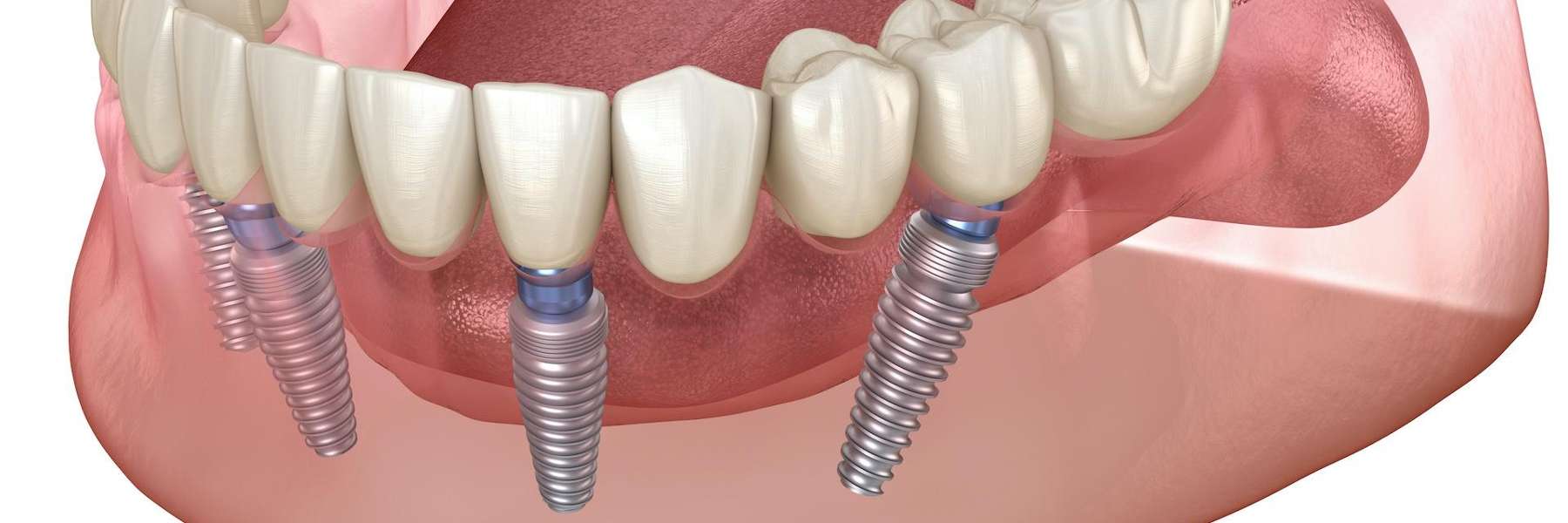
In the event of tooth loss, it's vitally important that the site(s) of any missing teeth not go neglected. Leaving the site of a lost tooth untreated carries significant risks, including increased susceptibility to infection, loss of jawbone density, shifting of neighboring teeth, and changes to facial structure.
Patients who've suffered tooth loss have multiple tooth replacement options from which to choose, including dental bridges and complete or partial dentures. However, the most effective and longest-lasting replacement solution is dental implants.
Today, we're looking at what exactly dental implants are, why they're necessary, the process through which they are placed in the mouth, and how to properly care for them.
What Are Dental Implants?
A dental implant is a small titanium post that replaces a natural tooth root. These small posts are surgically implanted into the hole (or "socket") left in the jawbone by a lost tooth and create an anchoring point for replacement. Once an implant has fused with the jawbone (in a process we'll discuss shortly called "osteointegration"), it's typically covered with a porcelain crown, replicating the look, feel, and function of a natural tooth.
That they not only allow for the replacement of a tooth above the gumline but replace the root itself is what sets dental implants apart from other tooth replacement solutions. Also, in addition to being the most natural-looking and feeling alternative to natural teeth, dental implants are the most durable! With proper care, a dental implant can be expected to last a decade and a half (if not a lifetime!) without the need for retreatment!
Breaking Down the Process of Getting a Dental Implant, Step-by-Step, from Start-to-Finish
At this point, you may be wondering how exactly this process plays out. Fortunately, we've put together a detailed breakdown of the full dental implant process:
- Initial Consultation – This process begins with a consultation with a qualified dental implant specialist. During this visit, the patient's oral health is evaluated, and x-rays, scans, and impressions are taken of their teeth and jawbone.
- Treatment Planning – Based on the evaluation, taking into account the number of implants required and the need for additional procedures like tooth extraction or bone grafting, the dentist creates a treatment plan tailored to the patient's needs.
- Tooth Extraction (if needed) – If the patient still has a damaged or decayed or damaged tooth in the implant area, it may need to be extracted (and the area allowed to heal) before implant placement.
- Bone Grafting (if needed) – In cases where the jawbone lacks the density to support an implant, a bone graft involving the addition of bone material, which fuses with natural bone over time, may be required.
- Implant Placement – Once the jawbone is suitably ready, it's time for the implant placement procedure. This involves making an incision into the gum tissue to expose the underlying bone, into which a small hole is drilled. Then, the implant (again, typically made of titanium) is inserted into the hole, which is then stitched closed.
- Osseointegration – As we noted above, once an implant is in place, it is allowed, over a period of a few months, to fully fuse with the jawbone. During this time, the bone grows around the implant, providing stability and strength.
- Abutment Placement – Once osseointegration is complete, an "abutment," which connects the implant and the replacement tooth or dental crown, is attached.
- Final Restoration – After the gums have healed around the abutment, the dentist takes new impressions to create a final restoration, which is custom-made to match the color, size, and shape of the natural teeth. This final restoration can be a dental crown, bridge, or denture.
Once the process is complete, follow-up visits will be scheduled to monitor the healing process, ensure proper integration, and make any adjustments to the restoration.
It's important to note that the timeline and specific steps may vary depending on individual circumstances. Your dentist will guide you through the entire process and provide specific instructions for aftercare and maintenance of your dental implants.
Issues That May Hinder Getting a Dental Implant
Dental implants are an excellent solution for patients who've suffered tooth loss. Unfortunately, they're not suitable for everyone. Appropriate candidates for dental implants are individuals who:
- Are at least 18 years of age
- Have relatively healthy gums (people with gum disease cannot get dental implants)
- Have a jawbone structure that is strong enough to support an implant
In addition, dental implants tend to be among the priciest tooth replacement options. As they are typically defined as "cosmetic" and often not covered by dental insurance, affordability can be an issue for some patients.
As always, however, it's best to consult a dentist or oral surgeon to determine whether you are good candidates for dental implants.
Dental Implants in Anderson, SC
If you're in the Anderson area and think you might need dental implants and would like to learn more about the implant placement process, contact the team at Hopewell Family Dentistry to schedule a consultation appointment.
